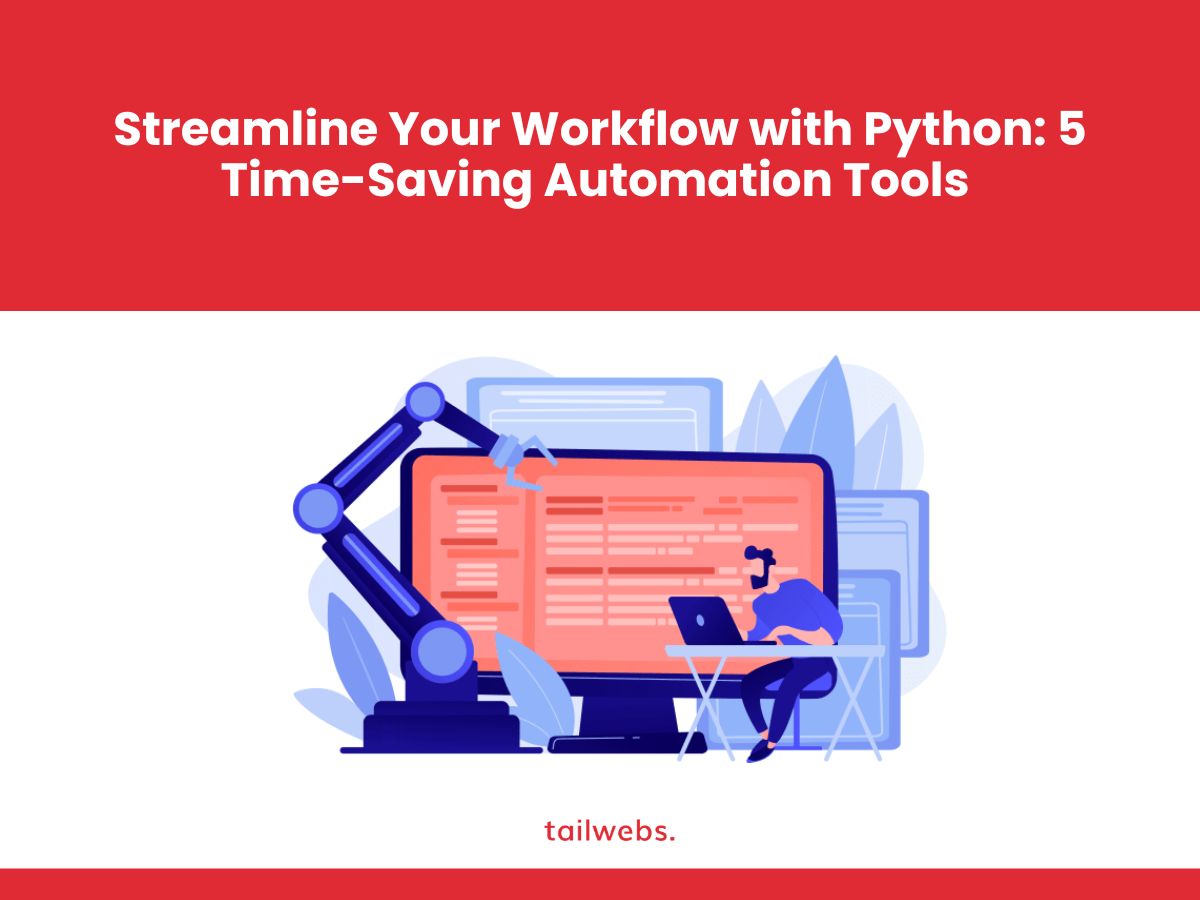In today’s fast-paced world, efficiency is key. Whether you’re a programmer, data analyst, designer, or entrepreneur, repetitive tasks can eat into your valuable time and hinder your productivity. But what if you could leverage the power of Python to automate these tasks, freeing yourself up to focus on higher-level work? This comprehensive guide introduces you to 5 essential Python automation tools that can streamline your workflow and help you achieve more in less time.
Unveiling the Efficiency Symphony: Understanding the Power of Python Automation
Imagine your workflow as an orchestra – every task a unique instrument contributing to the overall melody. But repetitive tasks are like screeching out-of-tune notes, disrupting the harmony and slowing down the performance. Python automation tools act as your conductors, orchestrating these repetitive tasks flawlessly, allowing you to focus on composing the truly impactful parts of your work.
Stats Highlighting the Benefits of Python Automation:
- Automating tasks can save professionals up to 20% of their time. (TechJury, 2023)
- Python is the top choice for data scientists, with 77% using it for automation. (KDnuggets, 2023)
- Increased productivity through automation leads to a 19% improvement in employee satisfaction. (Workhuman, 2023)
Composing Your Efficiency Melody: Essential Python Automation Tools
Ready to conduct your workflow towards increased efficiency? Here are the key instruments in your toolkit:
1. Selenium:
- Automates web browser interactions: Automate tasks like logging in, filling forms, and scraping data from websites.
- Perfect for: Web data extraction, testing web applications, and automating repetitive online tasks.
- Recommended for: Data analysts, web developers, and marketers.
2. Pandas:
- Manipulates and analyzes dataframes: Clean, organize, and transform large datasets efficiently.
- Perfect for: Data cleaning, aggregation, and feature engineering for machine learning models.
- Recommended for: Data scientists, analysts, and researchers.
3. Beautiful Soup:
- Parses and extracts data from HTML and XML: Scrape data from websites with complex structures.
- Perfect for: Web data extraction, building web-based tools, and data cleansing.
- Recommended for: Data analysts, web developers, and researchers.
4. PyAutoGUI:
- Controls your computer’s mouse and keyboard: Automate desktop applications and repetitive tasks on your computer.
- Perfect for: Automating file management, data entry, and repetitive software workflows.
- Recommended for: Anyone who wants to automate tasks on their computer.
5. Requests:
- Makes HTTP requests and downloads data: Interact with APIs and download data from the web programmatically.
- Perfect for: Downloading data from APIs, web scraping, and building web applications.
- Recommended for: Web developers, data scientists, and anyone who needs to interact with APIs.

Beyond the Basic Notes: Building a Symphony of Optimization
Remember, mastering these tools is just the beginning. Consider these additional factors to maximize your automation potential:
- Start small and gradually automate tasks.
- Document your code and share it with your team.
- Regularly review and update your automation scripts.
- Consider ethical implications and avoid automating actions that could harm others.
Ultimately, using Python for automation empowers you to:
- Free up valuable time for more strategic and creative work.
- Reduce manual errors and improve data accuracy.
- Increase your productivity and overall efficiency.
- Unlock new possibilities for data analysis and automation.
By adopting these tools and practices, you can transform your workflow from a monotonous solo performance into a harmonious symphony of efficiency, empowering you to achieve more and make a greater impact in your field.
Here are some final calls to action to empower your audience:
- Challenge your readers to share their biggest time-consuming tasks or processes they’d like to automate.
- Offer a free downloadable “Python Automation Starter Kit” outlining basic tasks and code examples for each tool.
- Organize a local meetup or online workshop on practical Python automation techniques.
- Connect with established Python communities or mentors for guidance and inspiration on your automation journey.
Conclusion: Conduct Your Efficiency Symphony – Compose a Masterpiece of Time Management
Remember, building an efficient, automated workflow is akin to conducting a masterful musical piece. Just like an orchestra requires dedication, practice, and continuous improvement, so too does your journey towards achieving peak productivity. As you embark on this path, consider the broader impact:
- Promote a culture of continuous optimization: Encourage your team to identify and automate repetitive tasks, fostering a collaborative environment that thrives on efficiency.
- Embrace ethical and responsible automation: Ensure your automation efforts align with ethical principles, avoiding biased algorithms or actions that negatively impact others.
- Contribute to open-source automation tools: Share your learnings and contribute to the development of open-source automation tools, empowering others to benefit from your expertise.
- Advocate for sustainable work practices: Utilize automation to promote work-life balance and prevent burnout, creating a more sustainable and employee-centric work environment.

Ultimately, the future of work belongs to those who embrace automation not just as a tool for individual efficiency, but as a means to optimize entire systems, processes, and organizations. By adopting this mindset and composing your workflow symphony with the tools and practices outlined above, you can transform from a single soloist to a skilled conductor, leading your team towards a harmonious performance of efficiency, innovation, and positive impact in your chosen field.





